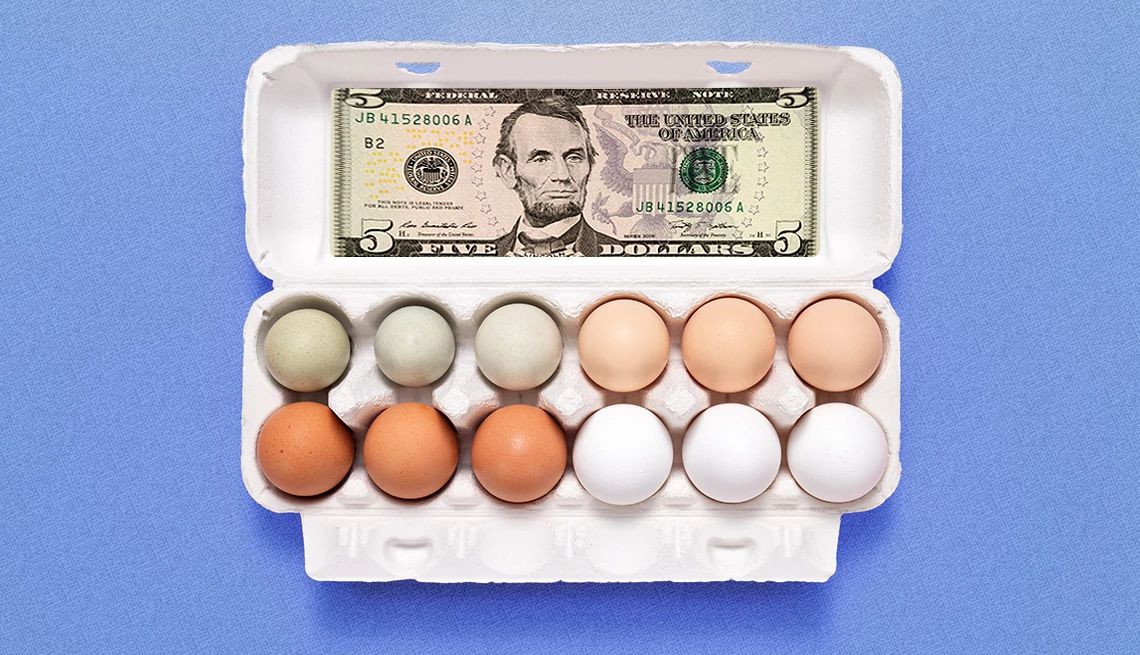AARP Hearing Center


Inflation is easing, but you wouldn’t know it from a trip to the supermarket.
Gas prices are down as of the most recent consumer price index, but food at home costs 1.1 percent more year-over-year.
The culprits behind elevated food prices in certain categories are lingering structural problems like extreme weather that affects supply and strong demand.
“Structural and acute challenges are what drove inflation to get out of control in 2021 and 2022,” says Tom Bailey, a senior consumer food analyst at Rabobank. “The structural challenges are not something that will go away. I wouldn’t be surprised if we see 3 to 4 percent inflation in broad terms for food for several years.”
Take eggs: Prices are no longer up 59.9 percent over the previous 12 months as they were in December, but they still cost 10.2 percent more than they did at this time last year. A big reason is the avian flu. Chickens that produce eggs have a longer life cycle than the ones raised for meat, and they are more susceptible to avian flu outbreaks. An outbreak in March is affecting supply, which drives prices up.
“It’s a more persistent problem for layers versus birds that go into meat production,” Bailey says.
Adverse weather events such as this summer’s heat wave can affect cattle production and thus prices for beef and meat. Butter is another product that still costs more, mainly because of strong demand and lower milk supply.
With all that in mind, here’s a look at five supermarket staples that are pricier in 2024.
1. Eggs
Average price: $2.72 per carton
Year-over-year increase: 10.2 percent
Options: Savings are hard to come by when supply is low — which is the case for eggs. You’re not going to find discounts, buy-one, get-one-free deals or coupons, says Kristin McGrath, shopping expert with RetailMeNot. Short of not buying eggs or using a protein substitute, there aren’t ways to save, she says.
2. Butter
Average price: $4.20 per pound
Year-over-year increase: 6.9 percent
Options: As with eggs, there are few ways to save on butter other than to use an alternative such as margarine, the cost of which is down 1.1 percent in June, a whole lot cheaper than butter.
“At what point will consumers start saying, ‘Put margarine on my toast’ again?” Bailey says.



































































More From AARP
5 Things Getting Cheaper in 2024
You won’t feel much relief, but there are some categories where prices are coming down a little bitHealthy Eating Doesn't Have To Be Expensive
Plenty of ways to whip inflation and eat heallthy foods, too
14 Food Stores That Give Discounts to Seniors
Here’s one way to save on food pricesRecommended for You